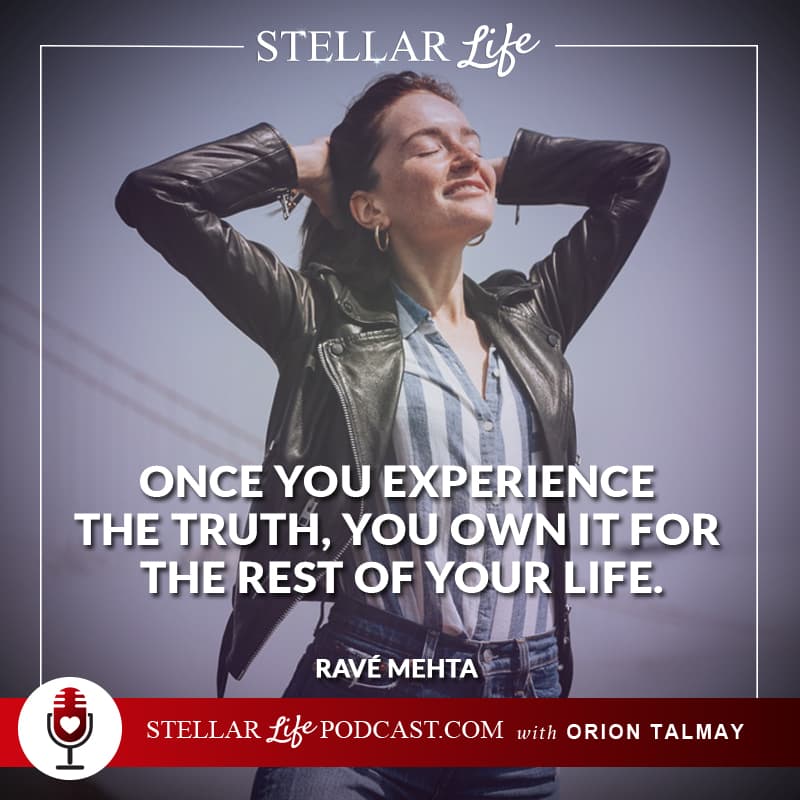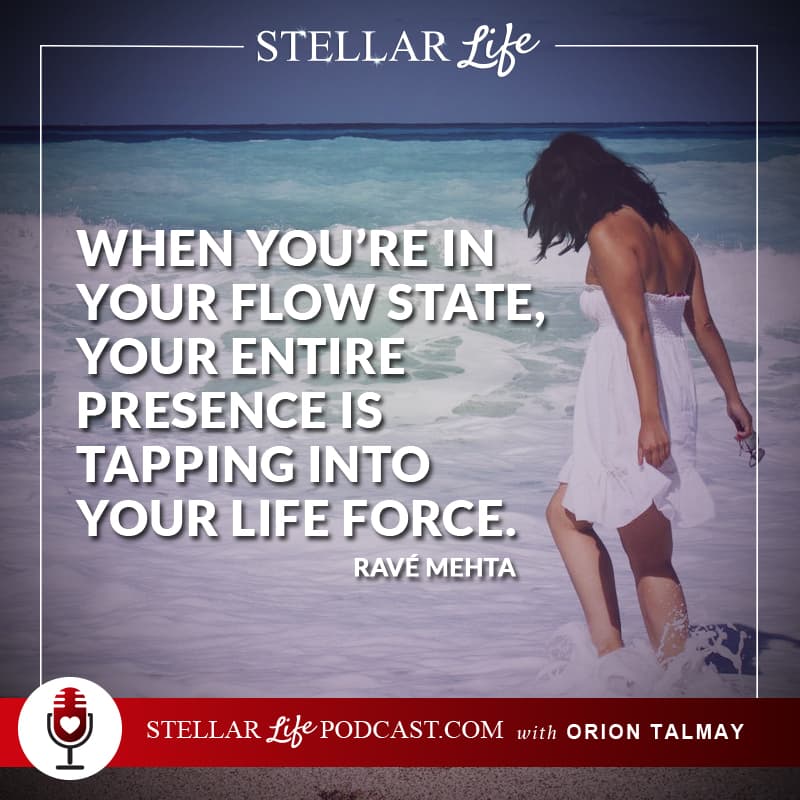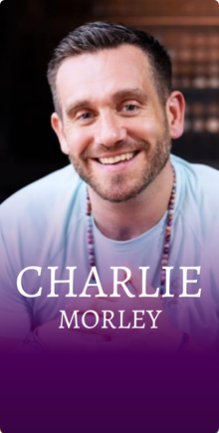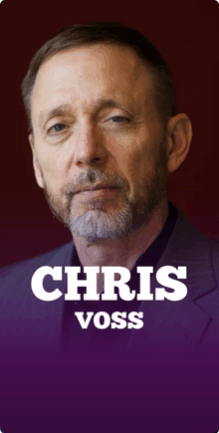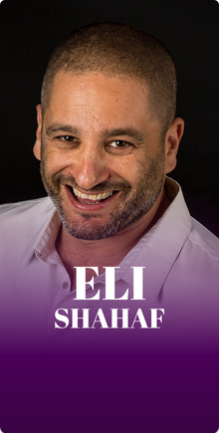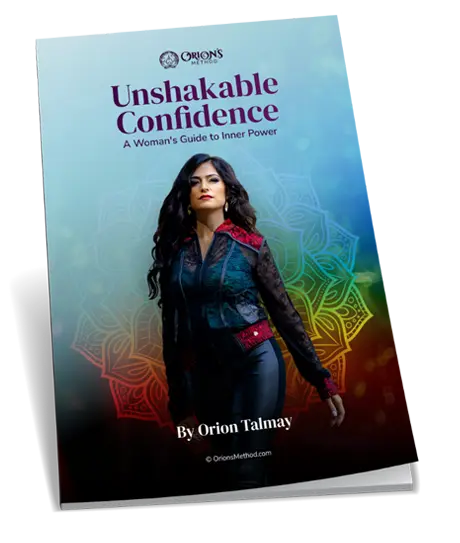
About Today’s Show
Welcome to the Stellar Life Podcast, Ravé. Why don’t you share a little bit about yourself?
I’m a pianist, an author and an entrepreneur. I spent fifteen years researching fear and flow and started writing a book on that called Hacking Fear. In 2012, I got sick. I caught Lyme disease and it repurposed my life. It gave me another angle on fear because the fear research and stuff I did before was based on perception. I also had anxiety and panic attacks and all sorts of fear-related experiences. I could tell I was not generating these thoughts or these feelings at least not from my mind. They’re being induced upon me. It was like a chemical-type of inductions. It gave me another lens that there’s another source of fear that’s not top-down or perceptually down but more bottom up. It could happen through a disease or chemical imbalances or things like that or even parasites, for example, releasing neurotoxins.
I spent the next four years researching flow and understanding how we access flow and what blocks our flow. Through all these lenses, I was able to discover a framework of how this machine works and what we’re here for as a human experience. That’s my background, I’m an engineer by trade and a scientist also. I combined my engineering and science background with my music and arts and started producing these Piano Sound Baths. I take these principles of flow and incorporate them into an hour-long uninterrupted piano performance where people lay down and drop into an altered state and hypnotized by the music and travel and work through all sorts of things in there during the sound bath. The idea is to induce more flow into their system, help them let go, which allows flow to enter into the system. The background between music and engineering and science and human potential, those are my passions.
I like what you said about you have the perception of what fear is, but until you don’t experience an anxiety attack for yourself and things that happen maybe later on in the years. You’re young and healthy and everything is going for you and then something happened like a disease or some crisis or something in the family. You do experience a different type of fear that you never encountered before, there is toxicity or medication or hormone imbalances. It’s almost like your brain is hijacked and swimming with emotions that are foreign to you and then how do you deal with that.
When I was having these anxiety and panic attacks and also depression, none of which I’ve ever experienced before my life prior to this. It was interesting because at least I could tell because I’ve done so much work on honing in my perceptual skills, shedding my fears from the perception realm, which is reframing things and releasing past traumas. I could tell that they were not my thoughts. It’s very distinct that I’m not creating this. They’re certainly being pushed on me but I have no idea where they’re coming from. Those people who don’t have or haven’t spent time researching or learning or have medical training or even basic anatomy training of how hormones and chemicals and pathogens work and what they do to the body. Most of that knowledge isn’t even through medical training. They would have no idea and they would accept what anyone tells them like, “You have anxiety, take this pill.”
Those pills a lot of times add more chemicals and toxicity to the system that might give you a temporary alleviation or relief but over the long run, it’s throwing you even more off balance. If you’re taking it every day and you believe without taking your own experience and feelings into account, then it could throw you into a downward spiral that would be difficult to get out of. There’s no one to support you because they don’t understand. I feel like I’ve become significantly more empathetic to those that have not just mental illnesses but even women that are on their period and have hormone swings. I experienced that through Lyme indirectly through my swings because of what was going on. All around much more compassion empathy and understanding what we need during those times.
An attachment to a person, an idea or whatever it is is still a relationship, and relationships is how we grow. Share on XWhen one has this added thing like hormones or medications or toxicity, exposure to mold, Lyme or whatever, what did you do? How did you get over it?
I tried the Western medical system. I went through every test. I went through all the normal tests. I went through every specialist and nobody could find anything wrong with me. All the blood tests showed up fine. There might be a couple of markers here that are a little bit out of ranged but nothing that would stand out as a red flag. Their final conclusion was I had anxiety, “Here’s some Prozac.” I realized quickly that the Western medical system definitely has limitations on what they understand and what they can do. I found that they’re great for surgeries and trauma, those kinds of stuff quick fixes. When it comes to chronic type things, it’s not their sweet spot so to speak. Their catch-all bucket is, “You have anxiety. Here’s some Prozac or here are some antidepressants or something,” when they don’t understand what’s causing it. They’re not great at root cause either. Their only tool is antibiotics to kill something, which is bacteria. When it comes to viruses, parasites or fungus, they don’t have good tools or solutions. I tried the antibiotics and they gave me ulcers after a couple of weeks. Their only tool that was helpful was not helpful for me.
I spent the next three to four years visiting 30 to 40 alternative health practitioners, scientists and technologists. Anyone that was on the fringe outside of the mainstream and all around the world too. I was on a hunt. I was searching for a higher understanding of how this machine works. What triggered that was that I had a book, a graphic novel I wrote on Nikola Tesla called The Inventor. It’s a story of Nikola Tesla and Thomas Edison and how that battle took place. They call it the War of the Currents and how Tesla essentially used the power of his mind and imagination to electrify the world, bring electricity to the world and put us into electrical age despite all the obstacles he had.
Even though I wrote it, at that time it inspired me like, “These are my obstacles, life-threatening.” I felt like I was going to die. I dropped 30 pounds in a month. I was having random blindness spouts and cramps. I can’t eat. I can’t see. I can’t think clearly. I had anxiety and depression. Everything would flare up randomly with no order to the madness so to speak. It kept getting worse. I had no idea what was causing it. All the doctors could not figure it out. There are times I can’t even breathe completely. I wake up in the middle of the night gasping for air because my body literally forgot how to breathe. It came out of rhythm and I had to create manual breathing rhythms until it sinks back up. I thought I wasn’t going to survive 2012. My last act on this planet was I’m going to release this graphic novel that I spent two years working on Tesla who also had these crazy obstacles that he defeated.
I get to Comic-Con and had three days of book signings. I missed the first day because I was too sick to show up, I felt nauseous. The second day, I was too nervous because I thought at Comic-Con they have 120,000 people with lights and sound. It’s crazy and very frenetic so I thought that would overwhelm my system so I didn’t go. The last day, my sister shows up to my hotel room and drags me there saying I’m going to regret if I don’t make this final book signing. I did and I got there and there’s this long line of people waiting for me to sign the book. I was shocked at first that people cared about this topic in this book. Ten minutes into signing the books, people will tell me how grateful they were, how beautiful the art was or how much they love the story. All of a sudden, my body felt normal for the first time in eight months or seven months. My brain fog went away. My body stabilized. My muscles felt tight, my joints felt tight. I felt solid again. I was like, “This is what it felt like to be healthy seven months ago.” I almost forgot what normal health felt like at that point.
In twenty minutes, I felt like I went skydiving. I had this adrenaline rush. Everything was vibrant again. People look beautiful. Life looked amazing. I was like, “I want to live.” That gave me a clue and hope that maybe I could find a way of beating this mystery illness. I still didn’t know it was Lyme. I moved back to Florida from LA where my family is from. That’s where I spent the next three to four years searching and learning all these different modalities and perspectives on mind and body. Ranging from Ayurveda to homeopathy to acupuncture and Eastern medicine to things that are more technological like resonant frequency testing, voice recognition technology and all other things to even say things that I would refer to as mystical because there’s nothing that explains it, where people do a lot more energetic type of work and even the voodoo guy.
Somehow, they all have some impact and over time as I start trying these things, I try something I get better and then I plateau. I’ll try something new and I’d get better a little bit and I get plateau again. I was definitely getting better incrementally, but I was never resolving. A friend of mine introduces me to a guy named Steven Kotler who also had Lyme disease and he thought that we might be able to exchange ideas and experiences. I looked up to Steven. He’s a great author and he wrote a book called The Rise of Superman. It talks about how action and adventure athletes defy death, break world records and do all these superhuman things by accessing flow states. On the call after we shared experiences, we started talking about flow. One thing he mentioned on that call that surely struck a chord with me was that when they researched these action and adventure athletes, they found that novelty is a driver of flow. I was like, “That’s it.” When I looked back, every time I try something new, I get better. When the novelty wears off, it’s when I plateau and then I try something new, I get better and then the novelty wears off.

Can you explain novelty?
Something that’s interesting and stimulating and new that leads to some intersection between curiosity and discovery, where you have this interest that stimulates the cognitive side of your brain and the emotional side of your brain. It feels like you gain an a-ha moment so to speak. These epiphanies, something novel like kids when they first go to Disney for example, it’s novel and overwhelming and all that stimulation and beauty and interest. By the time you go and you’re the parent, you’ve been there ten times, it’s totally not novel and uninteresting. It doesn’t induce new flow into you. When it is novel, you’re accessing new flow or new life force into your system as a result of it. Your first love, for example, the idea of love is novel, and then after you’re in a relationship for a while, the novelty wears off. You have to find new ways of keeping yourself stimulated and adding flow. Novelty is that first time of discovering something unknown that’s of interest and that makes you feel good.
I was in the state of flow I remember when I did my first Aikido test and everything slowed down. It was almost like in the movies where I could see my hand moving slowly. It was like a second in reality is like hours in my perception. It was cool and I could totally see what’s happening. I guess that’s what happened to those athletes when they do that complicated ski jump. When they are in flow state, everything slows down and their brain knows how to break down every tiny movement and calculate it. Another thing that gets me in state flow is I started painting and I find that hours can go by and I’m completely there.
When you’re in a flow state, for example, time slows down, you become hyper-present. You’re so present that every moment leads to the next without thought or hesitation.
Probably when you play the piano, you’re in flow?
Yeah, that’s one of my flow drivers is when I play. I get present and I channel the music through me. That front part of your brain turns off that they call the prefrontal cortex. The part where you’re second-guessing yourself, the critic, the doubting part of yourself. There’s nothing slowing you down now and now you’re managing your momentum of whatever direction you’re trying to do. Also, your brain is processing information a thousand times faster, which is why time slows down and you’re able to do all sorts of lateral type thinking in split moments. Therefore, you get so much more done and your muscle reaction time is significantly faster also. Your body can follow how fast your mind is moving or processing. The experience is time slows down and everything feels effortless. These things are happening and coming together naturally. That’s a flow state. I would do these things to put me in a flow state.
After I talked to Steven about this, it got me on the flow kick and I start researching and dropping head first into everything related to flow. I quickly found out that the flow state, even though I do all these experiments with accessing flow states, I go up into these peak moments and then I come back down to where I started which is my baseline default state, which is so low that I wasn’t functional. I realized that that’s good for peak performance but my baseline is so low, I want to raise my persistent default state. I ended up experimenting and learning a whole bunch of new hacks or processes of what will help me raise my baseline state. First of all, I’ll define flow as life force or prana because when you’re in a flow state, you’re so present that you’re tapping into all this life force that is pushing these toxins off your body.
Flow equals prana, equals pushing toxicity off of your body. You were in a place where it was either total flow where you experience the peak, and then you go down to your super low baseline. Then you had to find ways to get the same benefits of the peak state and bring it down to align with your baseline and bring that up.
What I was saying was that when you’re accessing that much life force, you’re pushing these toxins off your body so your bodies act in superhuman mode. That’s why you’re smarter, you’re faster, you’re stronger and you heal quicker in the process because your body is now in regenerative process. What I realized was there are five layers in how we access flow. The physical body is the last layer, the bottom layer. The layer above that is what I call your meridian body, and this is the realm of the acupuncture and yoga, where they talk about the chakras. We access this life force through these meridians, which powers the physical body and allows that to function. That’s the power source. The layer above, the meridian layer is the mental and emotional layer. This is where your fear-based emotions and your trust-based emotions, the two opposites. All of the negative emotions read it in fear and all positive emotions are immersed through trust. That’s a realm of emotions essentially, which affects your meridians. If you have a fear-based emotion, you block your meridian and that trickles down to your physical body. The parts of your body are not getting the full power, but it should be. The layer above the emotional-mental realm or layer is the belief system, the programming that determines your emotional states a lot of times.
The practice of shedding fears gives you more freedom. Share on XWhen we are triggered, for example, that rises to that belief system of programming where and why we’re triggered. The last layer, the fifth layer, which I call is the realm of universal truths. In the universal truth realm, there’s infinite flow or there’s an ocean of flow available. That’s where all flow is and they’re captured in all these truth bubbles, it’s the way I visualize it. There are these bubbles of truth that we’re here to experience and each bubble has flow in it. When you get these a-ha moments like these epiphanies, you’re popping a truth bubble and all that flow goes down to your baseline and it raises your baseline by that much flow permanently. Once you experience that truth, you’ll never go back. You own that flow for the rest of your life and thereafter, depending on what you believe. What I realized was, going back to the truth realm, when you have a belief system misaligned with the truth, then you get less flow. That then generates fear-based emotions, which creates less flow. That creates a meridian block, which creates less flow and then your body only has drops of flow from this ocean of flow available to it. Then that drops you do have, you now have the heavy metals, chemicals, the pathogens, the food allergens, the toxins that block your flow even more. If you don’t address the toxins, you develop disease and then eventually atrophy and die.
The Lyme created so much sensitivity because Lyme is essentially a nervous system disorder that causes nervous system inflammation. My buffer to handle these toxins that we all put in our body over time through aluminum, deodorant, makeup, food, pesticides, all of these things that we put in our body over time build up unless we intentionally detox them. My buffer went close to zero. All these stuff that I had in my body that my body was normally handling also became inflammatory triggers. It’s causing inflammation all over my body, giving me these symptoms of all these various diseases that we have names to in our textbooks, but we have no idea where they’re coming from like MS or Parkinson’s, Crohn’s disease, IBS, so on and so forth, even random blindness. Nobody knows but they’ve given a label, but they have no idea what causes them and that’s in the nervous system. What I’ve figured out how to do is systematically identify and detox these toxins out of my system, so I can reclaim the flow I already had to begin with.
The equally interesting part of this was can I grow my pipe to access my flow from the top down. I figured out how to essentially figure out what meridians or chakras are blocked that tells me what emotional set I’m dealing with. I could figure out what the feelings are then what stories are creating those feelings. Backward engineer that from the emotional realm to where those stories were created, which is the belief system realm. Once I figure out what created that story, like what experience created that perception that would trickle down, I would figure out what the assumptions were that held this perceptual lens out of balance or out of alignment with the truth. Once I forgot those assumptions, invalidates or validates those assumptions, most of them were not true, then I get this a-ha moment and pop the truth bubble and then all of that stuff go away. Systematically once I figured out, “I’m feeling a trigger right now. What’s bothering me?” I backward engineer myself all the way to that moment systematically. I kept doing that until my baseline flow profile got high enough to boost my immune system to rid myself of Lyme. Since that I became asymptomatic.
That sounds amazing and it sounds theoretical. Can you give me a very simple example like you’re speaking to a five-year-old? This is a trigger. How do I break it down? How do I go back in my thoughts when I am triggered and go through those realms?
If you’re in a relationship with your hubby who you love dearly and loves you dearly. That’s the whole point of relationships is to find our triggers. If he says something or does something that often triggers you and you have a strong reaction to that. You get angry or sad or something. That’s most likely has nothing to do with him or something that happened to you earlier that made you feel invalidated or had some emotional trauma to you. These can be very simple or these can be very extreme. It could be sexual trauma or it could be something like, “My father, when I was three years old, yelled at me for making a mess. Then every time someone talks to me about making a mess, it brings me back to that moment in time and I feel that emotional anxiety and strain.” For you, when you feel that, the first thing to do is catch you when you feel any emotional-mental stress. If you feel uncomfortable or discomfort then that means there’s some fear-based emotion that’s activated in you.
The hardest thing to do is catch you in those moments because we’re moving so quickly in life that we keep pushing through these things and take them as normal. If you catch yourself and you say, “What am I feeling?” and then you start asking why are you feeling that way. I call it the five whys. You could figure out what their base root feeling is, “I’m feeling invalidated. I’m feeling taken for granted,” or whatever that root feeling is. It helps to write this down or record this so you could track this. It also helps if you have someone that’s very verse on asking the right questions too in helping you navigate through this. When you get there, then try to regress to the first time you felt this feeling. When was the first time you felt taken for granted? You could go back as far as your birth even.

I had a girlfriend that had the memory of her mother and father talking to each other about whether they should have the baby. As she was in the womb hearing this and didn’t realize this, they were questioning whether they should have her because they weren’t sure they could support her. They had not enough financial support to have her. When she came out, she felt invalidated like she didn’t belong her whole life. She ends up spending so much energy in trying to validate herself by exercising three hours a day. Trying to make herself worth loving and worth keeping so to speak. Whenever someone said anything about how she’s over-exercising, she would get triggered and get very angry. It all came back down to this one conversation that she overheard from her mother father at the time when she wasn’t even born questioning if she should exist. When she confronted her mother about it, her mother is like, “How do you know that? You weren’t even born.” She recited what the words they said. Her mother’s like, “That’s exactly what we talked about.” Her mother explained to her why and she said, “It had nothing to do with you. It had to do with us.” Eventually, she had that a-ha moment, “This is their issue, not my issue.” Then that concern or that trigger went away. When she wouldn’t exercise two or three hours that day, she’d feel uncontrollable anxiety in her body. All of that emotional charge went away and the anxiety related to all of that went away as well.
Sometimes I feel like there are truth bubbles. For me, I can recognize something from my childhood and I’m like, “That’s not me, that’s my parents,” and the fear and the anxiety around it does not go away. I know what is the cause or what’s the root. In my mind, I get it but it doesn’t shift anything.
There’s intellectual understanding, which is what you’re referring to. You intellectually understand that this is not you, this is your parents. You have to experience the release for it to work.
How do you experience the release?
In that case, she went back to that point in time to remember. She was in the emotional state of where the charge was created and then I have her kept collecting data. I said, “What else do you see? What else do you feel? What else do you hear?” The more data she collected, the fuller picture she is getting of the scenario until she experienced an epiphany. You have to experience the a-ha moment because when you experienced that, you feel lighter and happier. You feel all this energy rush through your body. It’s the experience. We could teach everyone all the things that are not true. Until they go back and experience it at that moment in time, that’s how you released the charge. Then that charge goes from an electro-emotional charge to a memory, which is pure data, no charge is associated with it.
I did some work like that when they did the neurofeedback and I love it. My question is that sounds like a long process that involved tons of thinking and reflecting and having somebody like you come and intervene and asking the right questions. It sounds like work and long but what do you do when at the moment something triggers you? How do you handle that?
The way I break up fear, there’s acute fear and chronic fear. What I talked about is chronic fear. The triggers that keep coming up. The acute fear is when you’re in fear moment. There are three pillars of fear. The first pillar is time. Fear also exists in the future, many times triggered by the past, experience in the present. When you’re in a fear state, usually your head is in the future like, “What if this happens? What if that happens? What if I fall? What if I slip? What if he breaks up with me? What if I lose my house? What if I lose my job?” That’s a future state. If you bring yourself present and what I found out is when I brought myself present and there are different techniques to do that. You can do breathing to get yourself present is one example. Focusing on a specific task at that moment that needs to get done immediately, that brings you to the present. Focusing on music or something, it could bring you into the present. There are various ways of getting to the present.
The bridge between the universal truth realm and the belief system realm is perception. Share on XThen there’s no room for the fear to exist because there’s no future space for fear. Fear can only exist in that future space. That future space can be one or two seconds or it could be days or years ahead of you what you’re planning for. Bring yourself to the present. Think of yourself like a seesaw on a pinnacle. When you’re in the middle, which is the present, that’s where all your power comes from. The further out in the future you walk, the more out of balance you become and the less stability you have. The same with the past. The closer you are to the present, the more power you have to address whatever fear you have or even eliminate it. That’s one. However, sometimes we have to plan in the future. We’re planning our family, we’re planning our business or whatever it is. You have to go to the future. You have real challenges that you might have to face. The second pillar is what I called attachment. In a lot of the ancient philosophy, they talk about how attachment is a negative thing and we should focus on detachment. My lens on this is attachments are necessary because that’s how you build relationships.
A lot of people are attached to an attachment.
I’m attached to being detached. That’s a relationship with being detached. An attachment to a person, an idea or whatever is still relationship and relationship is how we grow. That’s how we find our triggers. That’s how we unleash ourselves so to speak. There’s nothing wrong with attachment, the problem comes with the nature of attachment. I broke it down into two basic types of attachments. One is a very rigid attachment or what I call structural attachment. Let’s say you and I have a relationship and in this relationship, I am wanting to place you exactly where I believe you should be relative to me and all the things that are going on in my life. In doing so, I’m holding your shoulder so to speak and there are these universal forces pushing on us all the time. I’m trying to keep you exactly where I believe you should be relative to me. This creates stress in this beam or this connection in my arms or this rigid being that’s attaching and connecting us, and the entire relationship is stressful as a result of it. You are where I believe you should be relative to me until there’s enough stress that breaks the beam and we slingshot away from each other. That’s one type of attachment.
The second type of attachment is what I call an orbital attachment. In that same example, imagine me letting go of your shoulders and you’re still there. What’s keeping you there is gravity, my gravity and your gravity. As these forces are pushing us, I might move you around but we’re still in each other’s orbit. You might move to the left, below me, above me, to the right. Even if our resonance changes over time like our interest and our paths of growth change over time, we may naturally gravitate away from each other or even towards each other. The difference is there’s no stress in this system. It’s pure gravity. We are moving relative to where we should be to each other. The right things move into our space and the wrong things slowly move away. The difference between the two types of attachment is the first one when I’m holding onto your shoulders and trying to force you into where I believe you should be, I’m focused on you. The second one where I’m letting go and I’m trying to create gravity to bring the right things and grow, I’m focused on me. It’s that subtle shift of me not focusing on you and focusing on me, changes the entire nature of the attachment which creates so much more flow into the system and it releases the fear. That’s the second pillar.
The third pillar is a special type of attachment. An attachment to a specific outcome, we call that an expectation. Expectations are there because we have goals and goals are necessary to keep us moving forward in some direction. There’s nothing wrong with goals. However, goals are initially formed based off intentions. We have an intention and then the goals emerge through the intentions, and then the specific outcomes of what we feel would accomplish those goals emerged through the goals. The problem is when we get too attached to that specific outcome like, “I want to make $1 million this year,” for example. First off, if we do meet that goal then there’s no real joy or elation because we expected it. That was part of the plan. If we don’t make it, there’s also all this depression, demoralization and so on and so forth that takes place, which is not fun.
A lot of times we give up or we get demoralized or we jump from thing to thing and never complete anything. The problem is not the goal but it’s the fact that we’re expecting it. If we switch that expectation to your preference, let’s say, “I prefer this outcome but not fixed to it, I’m not locked down to it.” It changes the energy of the entire experience completely. If I achieve that goal in the way I perceived it, then there’s all this elation and joy like, “We did it. We made it,” because it wasn’t expected. If we don’t achieve it, there is not that sudden drop of demoralization. There’s still a path forward. It was a preference but there might be other ways of achieving not the same goal but the same intention why the goal is created.

How do you create that change in attachment? I get the relational thing like if you want your relationship to be better instead of focusing on what the other person should be for you and where they have to be for you, you focus on yourself. Through focusing on yourself, your life and your love, you will create the gravitational force for you to dance in this orbital relationship. How do you take a desire that is so big? One that is so fixated and creates lack of attachment to the outcome and be like, “This is my life mission but now I’m going to change it, so I don’t care about it.” How do you do that?
The idea is not to not care about it. It’s changing it from an expectation, “I expect this to happen,” to a preference, “I prefer this ideal outcome.
How do you change that? If you’re so attached to something that you expect it to happen, you want it to happen, how can you move into like, “This is my preference?”
First of all, you have to choose, “I prefer this outcome.” The key is the outcome needs to be stated, so you have a direction to propel yourself first. How you state the outcome, “I prefer this outcome and I’m going to work my tail off to get to that outcome.” However, there are all these other universal forces that are way more intelligent than we are and have a much bigger picture than we are, than we do. We have a very limited spectrum of perception of knowledge and insight, and we’re leveraging and picking all of our major choices based on the very little information we have. The idea is we prefer it, we’re being open to other information and other forces to push us into our highest calling based on what our intentions are.
You have to be so spiritual to get to that level. It sounds like you have to be this Zen Buddhist to say, “I’m preferring this goal. Whatever happened to me in my life with the gravitational forces of the universe and the divine guidance that will take me forward, I’m going to be okay with everything.” You have to be a very conscious human being on a high level to operate in that dimension.
We’re here in the human experience to be spiritual beings.
It’s hard.
Nothing is not hard, more so it’s a practice. It doesn’t just happen. You have to work at it every day. Just like you go to yoga every day or like you work-out every day or you have your rituals every day, it’s a practice. This has been a fifteen-year or some work. Every time I make an a-ha moment, every week or every other week, every month or every year, I’m introducing new flow in my system and it feels good. The practice of shedding fears gives you more freedom. What are we here to do as a human species and what’s innate in our nature of being a human is to achieve higher degrees of freedom. We’ve seen that throughout history from slavery to women’s voting in a societal context. Even individually, what are we here? We’re here to experience more and more freedom until we’re fully free. That fully free you can tag as enlightenment or Moksha or whatever the words you want to wrap around it but it’s higher degrees of freedom. The more fear you shut off, fears contracting, it’s counter freedom and trust is more freedom. What we’re doing is we’re looking at all these opportunities, these emotional engagements, these careers and these projects to find our triggers to learn how to access more freedom.
There are opportunities for that to create more positive emotional engagements and learn how to access higher degrees of freedom. With that lens, it takes a whole lot of pressure off of our lives and expectations and societal expectations, and our parental expectations and our peer expectations on being a certain way. These are subtle mindsets shifts, these are perceptions shifts. If at some point even planting the seed now, there might be something that happens to you or whoever that might trigger the seeds, “I get it.” It’s a practice and you don’t have to be a Buddha to do these because I’m certainly not a Buddha, but you’ll find the right a-ha moments that will lead you to a deeper understanding of what these truths are. These are truths. To close out that one thing like saying, “I prefer it versus I expect it,” truly believing that you prefer not just using the word for syntax, takes a lot of pressure off you. It doesn’t mean you don’t run hard and fast towards that direction, but it takes the pressure off, which gives you more flow, which probably increases your chance of achieving that.
I find it in everything in life. When I plan really hard for things to happen and push, it’s not always easy and it takes a lot of effort and stress. When I allow and I have this notion of like, “I’m going to try and I’m going to be in a higher vibration. I’m going to be happy and I’m going to be the gravity.” I’m going to focus on myself and be the gravity for things to manifest in my life then they manifest in pure, more beautiful, easier way. What I got from you is that enlightenment is like popping a string of truth bubbles throughout your life.
If you pop all the truth bubbles, you access so much flow that your body can’t handle it anymore.
It is the truth bubbles that brings you flow?
Yeah. The flow is captured in the truth bubbles or contained in the truth bubbles. Let’s pick a number. Let’s say there are 6,000 universal truths that were here to experience as a human. The more truth bubbles you pop, the more flow you can get. It takes money to make money, it takes flow to access more flow. They build on each other. It takes truths to access more truths and it falls like a Moore’s Law. It’s like an exponential curve. When you pop the final truth bubble, the grand truth for example, you have so much flow in your body that your body can no longer hold it anymore. Therefore, you have to let go of the body. It’s the ultimate surrender. That’s the final level of enlightenment. That’s how I would explain in a mechanical engineering way how enlightenment takes place, versus burning the karmas and all that stuff. There’s a mechanic behind how this whole thing works. It’s how we’re breaking it down and thinking of it because of my background.
Curiosity is a long term driver of flow. Share on XThe bridge between the universal truth realm and the belief system realm is perception. How you perceive either determines your belief system is in alignment or misalignment. If you don’t have enough data, then you’re going to have a misalignment of some sort to a truth because a truth encapsulates all of the information. The 360-degree around perspective, where we have a limited perspective. That’s why when we collect more data, we get a rounder perspective. We could finally get good enough to trigger a pop of the truth bubble and get the true a-ha moment. We are capturing a 360-degree perspective ultimately of any perceptual experience. The source of all flow, therefore, is perception and the source of any blocks of flow is also perception. I talk about this where we have IQ tests which measure our intelligent, which is pattern recognition and processing abilities.
Above your IQ we have what we call your EQ emotional quotient or your emotional intelligence. The emotional energy if you have a lot of fear, that means you have a lot of trapped flow that you’re not accessing, therefore your brain is not accessing enough flow to process faster just like you’re in a flow state. Therefore, your IQ is directly correlated to what your EQ level is. If you have a bunch of fear-based emotions that are stuck or triggers are stuck, you’re not getting enough flow into your brain, your IQ level, to process information faster, so your IQ is lower. If you release a lot of these fears, I’ve seen IQ points increase as high as fifteen points just from releasing a bunch of triggers because now you have flown your brain to process more information faster. What’s interesting though that no one’s talked about yet and what I’ve been writing about is the level of EQ, it’s what I call PQ, your perceptual quotient. All emotions are based on how you perceive the event or the experience. Managing your emotions is one thing. If I’m angry, “Breathe,” and I calm myself down. I know how to manage my anger or my anxiety or my depression or whatnot. Perception is managing how you create these emotions, “If I do this, I’m going to get angry, why am I perceiving that anger? Is this even true?” Learning how to manage your perception is a much higher order of control and mastery that trickles down into everything else. It’s essentially the source. I throw that out there for people to explore and play around with, tracking and understanding their perception beyond their emotion or what they’re experiencing.
I’ll give you one last example, which has to do with relationships. This is what your topics are about. My girlfriend and I, we’re in a relationship right now for two years. When we first met, she was coming out of a marriage. She’s separated and has been in a long-term marriage relationship for over ten years. I was coming off of Burning Man at the Playa and I always feel like I want to be free. We met, we had chemistry and sparks and we had a deep connection with each other instantly. We both had these expectations inhibitions of being free to date other people and experience other people and so on so forth, but we had this strong connection. Once again, expectation. Then we talked about it, we want to go deeper with each other but we don’t want to commit to a relationship, a long-term relationship because that’s counter to what we think we want. That’s our expectation and what we believe we want because we’ve been in these other relationships for so long.
First of all, I feel the same way. I said, “I have an idea, what if we do it in micro relationship?” She’s like, “What’s that?” I said, “What if we do an exclusive relationship for 30 days? That way we’re not worried about each other, what each other is doing when we’re not together and being distracted. We would go all in for 30 days. That’s it. At the end of the 30 days, we could decide if we want to extend for another 30 days.” She’s like, “I love it. That’s it.” What it did was it took all the perceptual fear of a long-term commitment because we knew that we had an out. It’s the same relationship, the same feelings, the same emotions, the same and exchanges. It’s the perception that’s shifted based on putting a 30-day cap on it. We never got to that 30 days. In two and a half, three weeks, we were like, “We love each other. This is great and we want to be with each other.” The point being is that would have never even happened if we didn’t create something to shift the perceptual lines on what we’re doing.
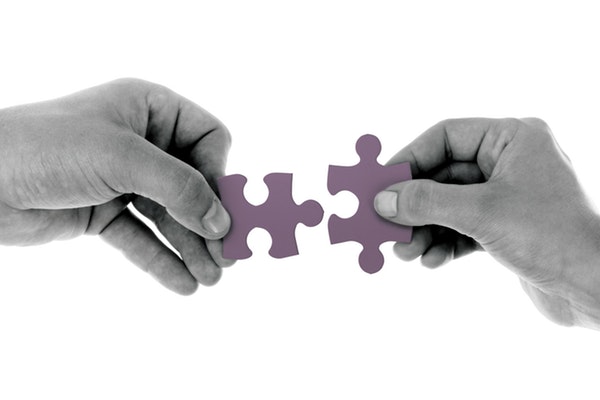
Many people have a fear commitment, this is an interesting hack to say, “Let’s commit for a small period of time, and then we can renew or we could expire.” That gives people the freedom and the trust that they’re no longer in a fear state. They’re not blocking their flows so you get to know them in a much truer way than you would what would have taken three years or three months to. Everyone’s so guarded in society. Explore the micro relationships if you have commitment issues or if you’re afraid to commit and you’re not sure. This limits your liability and your risk so to speak. It still gives you the openness and opportunity to learn and explore each other.
I have two last questions. One, what are your three top tips to living a stellar life? Two, where can people find you?
I’m on Instagram, @RaveMehta. The same at Twitter, @RaveMehta. You can follow me on Facebook also @RaveMehta. You can Google me to find the Piano Sound Baths or FlowTheShow.com is my show. What I realized for me is fun and pleasure cannot be underrated. Laughing is one of those things that induce flow into you. When I was at my worst moments, I would find some comedy show or something to watch because it made me laugh and induced more flow in my system. Joy, pleasure and laughing I would say are three things to pursue on a regular basis. We can work ourselves to death, but if we don’t incorporate those three things into our lives on a day-to-day basis or even design our lives to have those emerge often enough, then we are blocking our flow and we’re not optimizing our experience here. If we want to optimize the experience, it’s chasing joy, pleasure and I’ll say laughter responsibly. That will be my top three pursuits so to speak and then how you do that through community and friends.
Curiosity, what I’ve found, is a long-term driver of flow. You look at people like Stephen Hawking’s who lived to be 72 and is supposed to die at twenty, he’s an insanely curious guy. When you’re curious, you’re inducing new flow into your system and your body follows your mind. He quadrupled his lifespan purely based on curiosity like uncovering the secrets of life, new discoveries, the a-ha moments. He was chasing a-ha moments. If you look at Nikola Tesla, he lived to be 86 when the average lifespan for people born in his time frame was 50. He lived 50% longer. Even da Vinci lived to be in his 70s and he was born in 1452. People who are insanely curious like unlocking the secrets of the universe and life and all things that are interesting and matters tend to live longer. Chase curiosity, be curious.
Thank you so much, Ravé. I appreciate our conversation.
You’re so welcome. It’s my pleasure.
